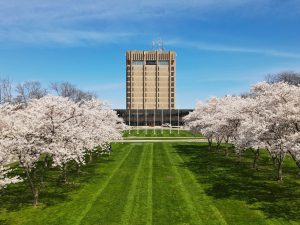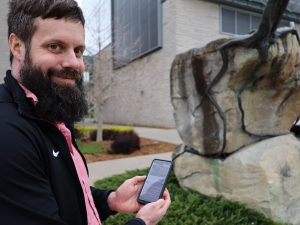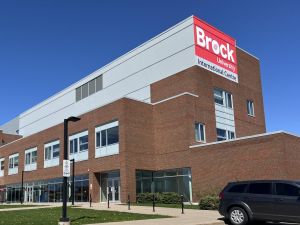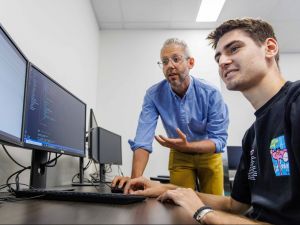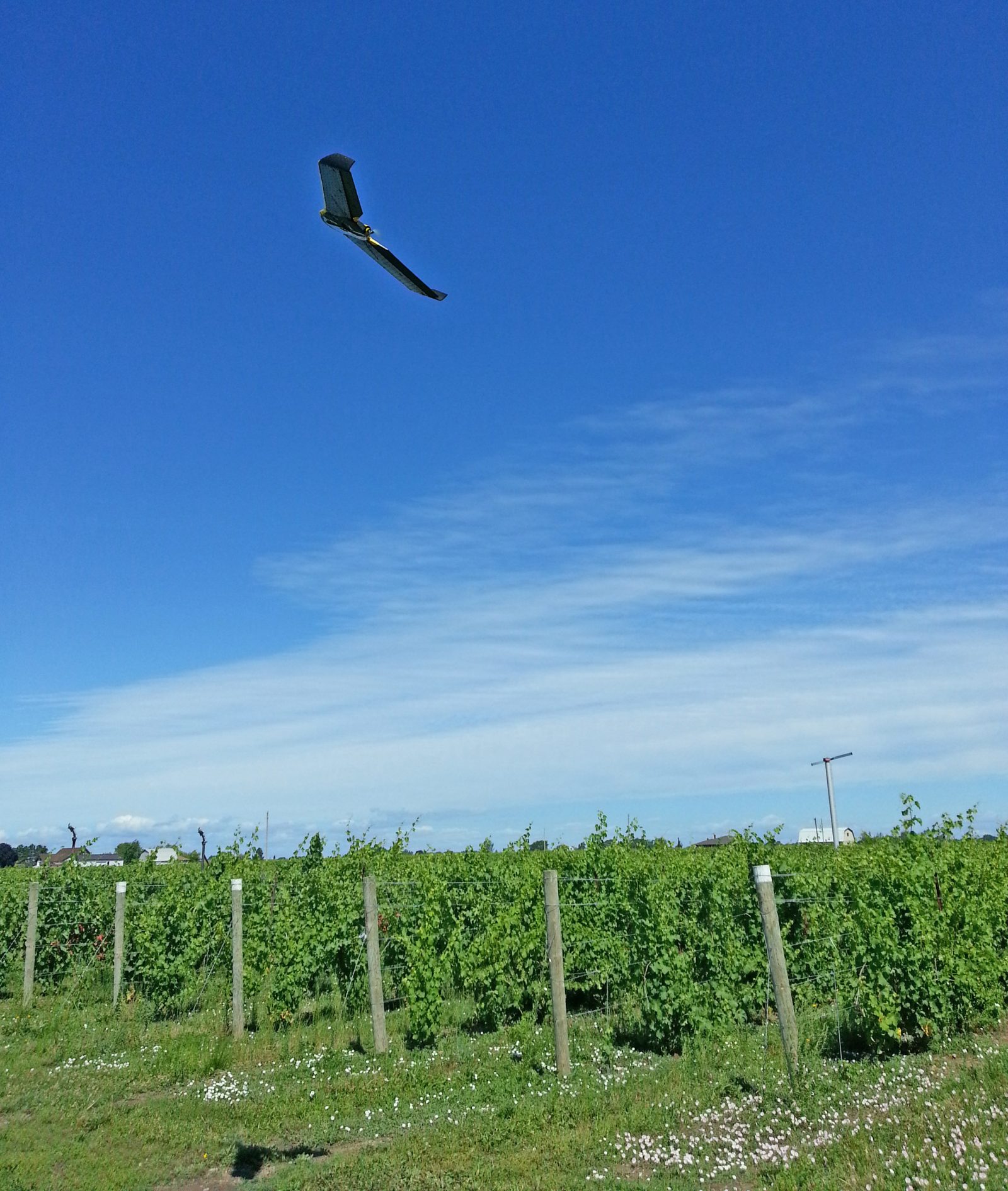 A Brock-led study is underway that uses drone technology to determine unique vegetative zones in vineyards.
A Brock-led study is underway that uses drone technology to determine unique vegetative zones in vineyards.What if you could pinpoint an area in the vineyard that will produce the highest quality grapes — or potentially harbour a devastating grapevine virus — without physically stepping foot between the vines?
Researchers at Brock’s Cool Climate Oenology and Viticulture Institute (CCOVI) are hopeful the results of their three-year study will allow grape growers to do just that.
Currently in its second year, the project is being undertaken by Hyun-Suk (Leeko) Lee (BSc ’09), alongside Brock master’s student Briann Dorin.
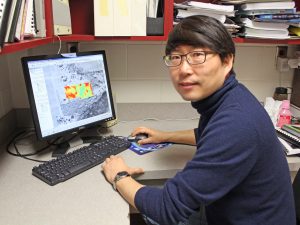
Hyun-Suk (Leeko) Lee (BSc ’09), is working alongside Brock master’s student Briann Dorin on a study that uses drone technology to determine unique vegetative zones in vineyards.
The study, which is utilizing drone technology to determine unique vegetative zones in the vineyard, has promising potential for the increasingly vital grape and wine industry — and has even piqued the interest of an international scientific committee.
Lee has been invited to speak about the preliminary results at the 10th annual Enoforum in Vincenza, Italy on May 15. The conference is hosted every year by the Italian Society for Viticulture and Enology (SIVE).
Lee is also the only North American researcher who has been selected as a candidate for the SIVE Oenoppia Award, presented to scientists who are conducting research on modern viticulture with a global reach.
“It’s really exciting and surprising to be chosen,” Lee said. “They think our research is innovative and that there is a lot of potential for the application of drones, business-wise.”
Lee and his colleagues selected 12 Cabernet franc and Riesling vineyards in the Niagara and Vineland regions for their study. Once a year, a drone would then fly over each of these vineyards and capture remote data about the vines below.
Using thermal data and readings on the Normalized Difference Vegetation Index (which determines the density of green vegetation on a patch of land, revealing where vegetation is thriving and where it is under stress), the team then divided the vineyard into different zones.
The goal is to determine whether drones can detect relationships between the conditions in these zones and the grapevine’s tolerance to cold weather and the quality of grapes — and eventually wine — those vines will produce.
Growers can already collect a lot of this information on the ground by manually walking or driving through the vineyard with hand-held sensors or a machine called GreenSeeker. Using drones, however, saves time and manpower because it can collect hundreds of images of large sections of the vineyard in a matter of minutes.
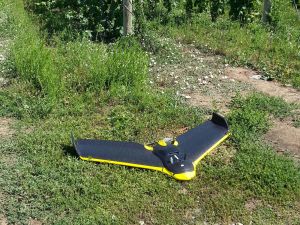
A Brock-led study is underway that uses drone technology to determine unique vegetative zones in vineyards.
The team is also looking to determine if drones may be helpful in monitoring viruses in the vineyard faster and more thoroughly than current methods of detection.
The technology uses sensors that can potentially detect the toll virus infection takes on the vine — which is not always noticeable to the naked eye in the early stages — from the air more effectively than relying on ground-level analysis.
Lee added that sharing this research overseas will put CCOVI’s work on the radar internationally.
“They may be surprised that we do so much wine research here in Canada and we can show them that, yes, we do very innovative research here that has a lot of potential for the industry,” he said.


